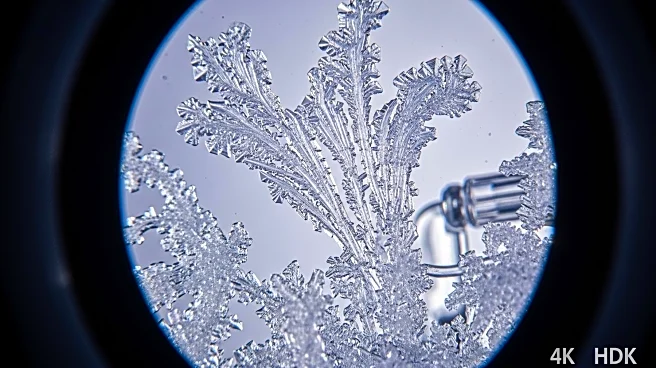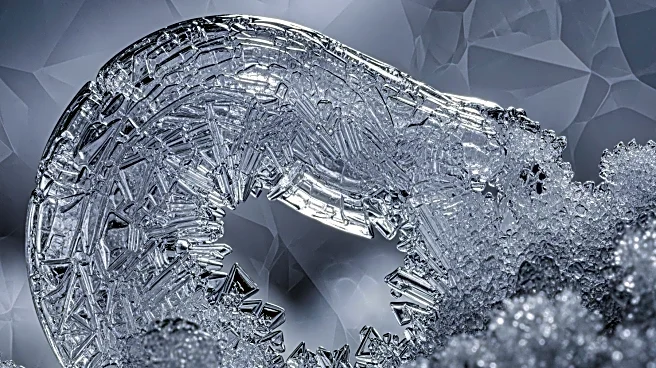What is the story about?
What's Happening?
Researchers at the Pacific Northwest National Laboratory have discovered that ice, despite forming in a hexagonal lattice, is surprisingly flexible and malleable. This discovery was made through molecular-resolution observations of nanoscale ice samples, revealing that ice can accommodate structural imperfections and trapped gas bubbles without fracturing. The study, published in Nature Communications, highlights the unique bonding properties of ice, which allow it to adapt to defects more easily than other solids.
Why It's Important?
The findings have significant implications for various fields, including cryogenics, aviation safety, and glaciology. Understanding the flexibility of ice at the molecular level could improve the preservation of biological samples and enhance safety measures for aircraft operating in icy conditions. Additionally, the research provides insights into the behavior of glaciers, which could inform climate change studies and environmental management strategies. The study opens new avenues for exploring ice crystallization and melting behavior, potentially leading to advancements in materials science.
What's Next?
Future research will focus on studying the melting process and examining more complex samples, such as water with dissolved materials. The team plans to collaborate with other institutions to further explore the molecular dynamics of ice and its implications for various applications. By advancing the understanding of ice's unique properties, scientists aim to develop new technologies and strategies for addressing challenges related to ice formation and behavior.
AI Generated Content
Do you find this article useful?













